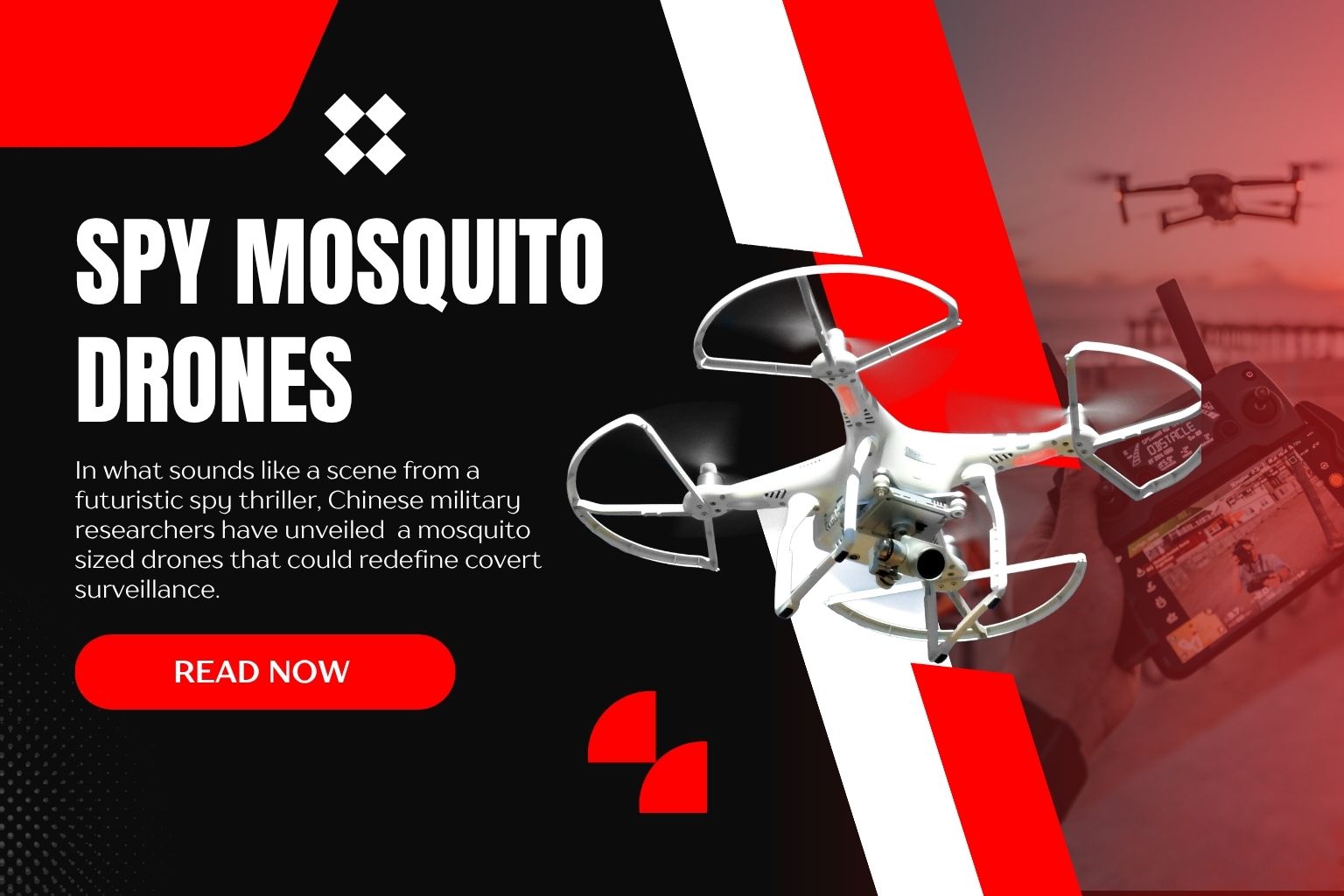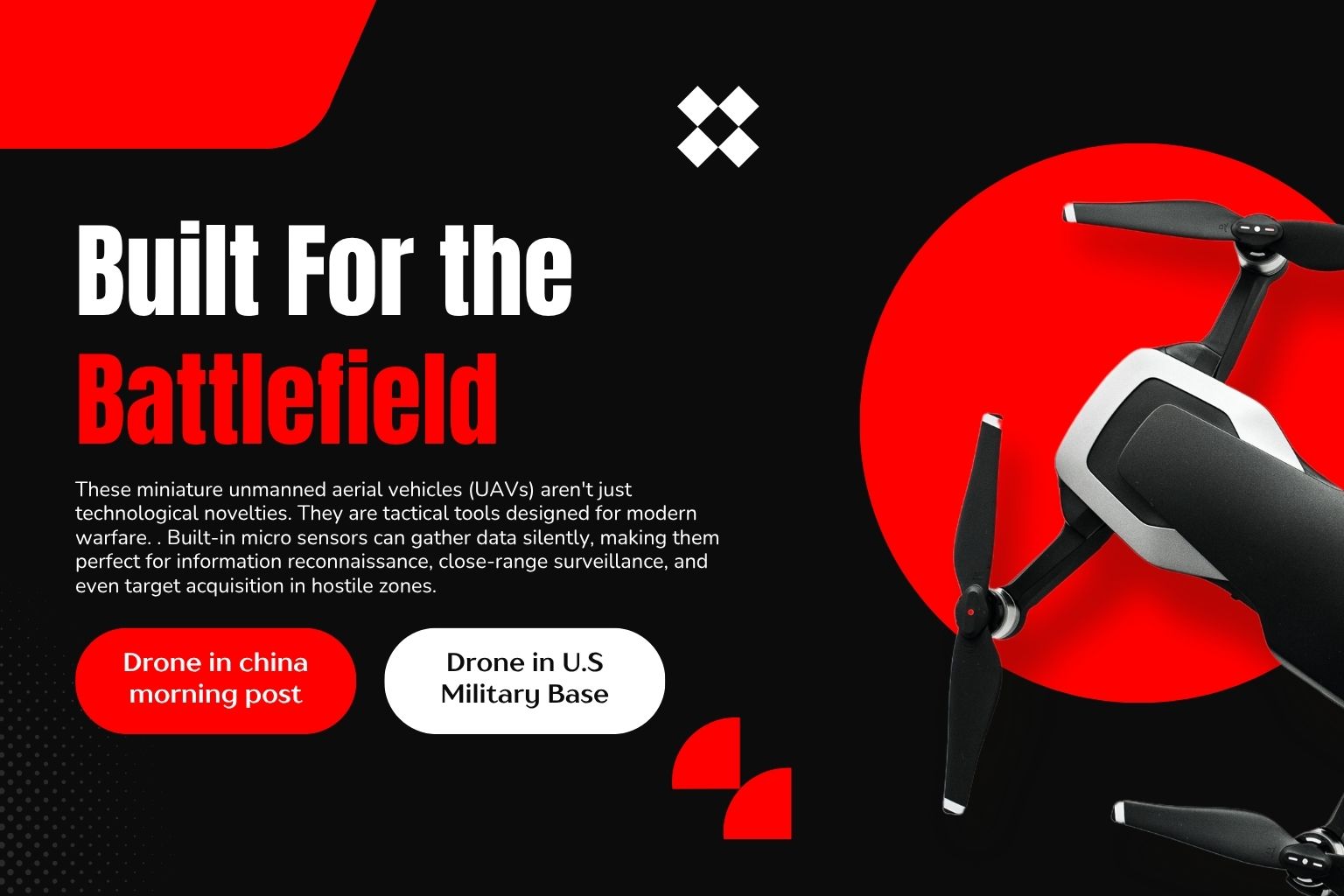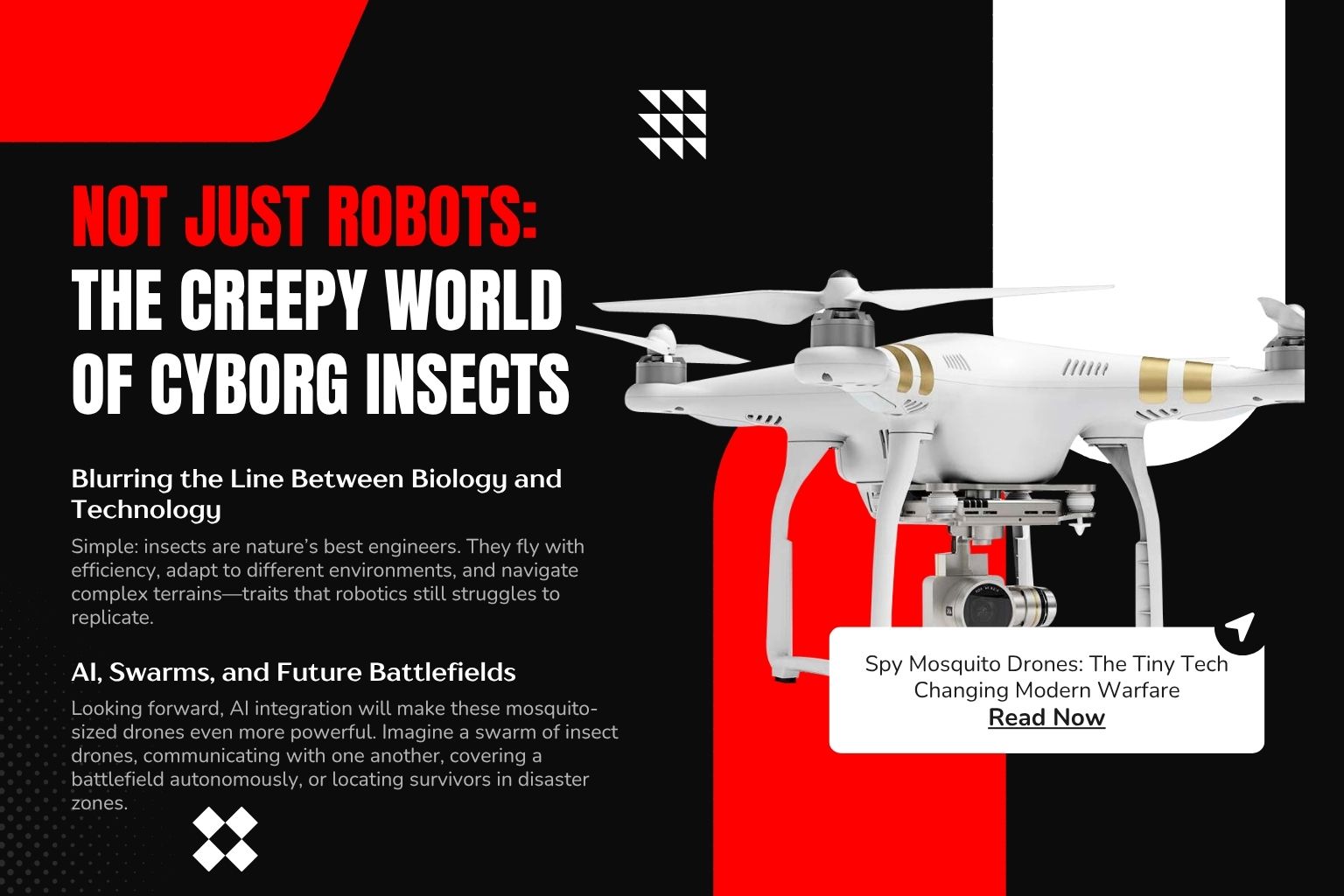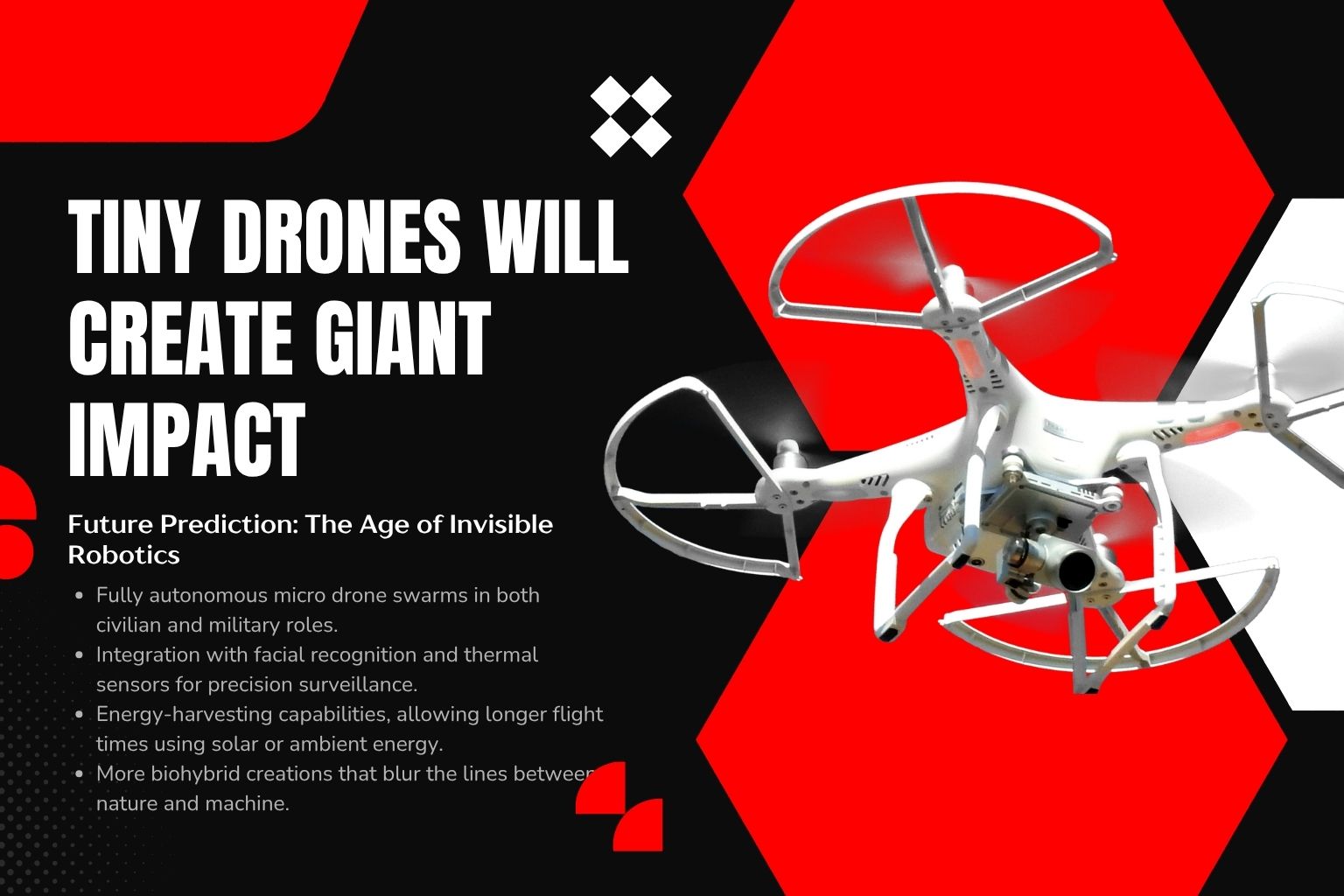🦟 Spy Mosquito Drones: The Tiny Tech Changing Modern Warfare
Smash Code
Jul 02, 2025

In what sounds like a scene from a futuristic spy thriller, Chinese military researchers have unveiled a mosquito-sized drone that could redefine covert surveillance. Developed at the prestigious National University of Defence Technology (NUDT) in Hunan, China, this micro drone isn’t just small—it mimics the size, shape, and even movement of a real mosquito.
“This robot fits in the palm of your hand,” explained Liang Hexiang, a student researcher at NUDT, during an interview with CCTV 7, China’s state-run military news outlet. “It’s designed for reconnaissance and special battlefield missions.”
With hair-thin legs, fluttering wings, and smartphone-controlled navigation, this micro-drone is tailor-made for stealth operations, slipping undetected into spaces where traditional drones could never go.
📱 Built for the Battlefield: Military Applications of Mosquito Drones

These miniature unmanned aerial vehicles (UAVs) aren't just technological novelties. They are tactical tools designed for modern warfare. Built-in micro sensors can gather data silently, making them perfect for information reconnaissance, close-range surveillance, and even target acquisition in hostile zones.
According to The South China Morning Post, NUDT’s micro drone project is part of China’s broader push toward AI-powered, autonomous warfare. This shift is not unique to China—nations worldwide are increasingly investing in smaller, smarter tools to win information wars before physical conflict even begins.
🌍 A Global Trend: The Rise of Micro Drones
China isn't the only country betting on insect-sized drones. Across the globe, micro drone research is soaring.
In April 2025, the Harvard Microrobotics Lab revealed a major update to its long-standing RoboBee project. This delicate robotic insect is roughly the size of a crane fly, capable of precise aerial manoeuvres, hovering, and even controlled landings. Originally started as a Harvard research initiative, RoboBee now has environmental and emergency response potential—from artificial pollination to post-disaster reconnaissance.
“RoboBee is a brilliant interface between biology and robotics,” said Dr. Alyssa Hernandez, a postdoctoral researcher at the lab. “By mimicking insect biomechanics, we’re able to test biological hypotheses and enhance robotic function at the same time.”
🛰️ Pocket-Sized Power: Micro Drones in U.S. Military Use
Meanwhile, the U.S. military has already deployed microdrones in the field. The Black Hornet Nano, produced by Teledyne FLIR in Norway, is a pocket-sized surveillance tool that comes with thermal imaging, real-time video feed, and noise-reduction technology.
With a weight of just 33 grams, the Black Hornet can fly into buildings, around corners, and under enemy radar, providing critical intelligence in urban combat situations. These drones have been actively used in operations across Afghanistan and Ukraine, proving their value in modern asymmetric warfare.
🧬 Not Just Robots: The Creepy World of

If the concept of a robotic mosquito makes your skin crawl, wait until you hear this: DARPA, the U.S. military’s experimental research division, has been developing real insect cyborgs since 2006.
Their Hybrid Insect Micro-Electro-Mechanical Systems (HI-MEMS) project involves embedding microchips into live insects like cockroaches and beetles, enabling remote control via electrical impulses to their nervous systems. These hybrid insects can carry micro-cameras or audio sensors, functioning as live, mobile surveillance platforms in areas inaccessible to human agents or machines.
As bizarre as it sounds, the science is sound. Insects naturally have lightweight exoskeletons and energy-efficient movement, making them perfect candidates for bio-robotic fusion.
🔬 Blurring the Line Between Biology and Technology
So, why are military and research institutions so obsessed with bugs?
Simple: Insects are nature’s best engineers. They fly with efficiency, adapt to different environments, and navigate complex terrains—traits that robotics still struggles to replicate.
By mimicking or integrating biological traits, scientists can push the boundaries of size, stealth, and sustainability. This fusion of biomimicry and machine learning has already led to breakthroughs in autonomous navigation, swarm intelligence, and energy-efficient flight systems.
Notably, a 2023 study published in Nature Robotics emphasised that insect-inspired flight is not only mechanically efficient but also highly programmable, allowing for advanced functions in swarm operations and precision strikes.
🧠 AI, Swarms, and Future Battlefields
Looking forward, AI integration will make these mosquito-sized drones even more powerful. Imagine a swarm of insect drones, communicating with one another, covering a battlefield autonomously, or locating survivors in disaster zones.
Such autonomous drone swarms are already under development. In 2022, China’s military conducted field tests involving AI-guided microdrone swarms for tactical simulation. Similar projects are underway in the U.S., U.K., and Israel, pointing toward a future where drone coordination is algorithm-driven, not human-controlled.
🧾 Conclusion: Tiny Drones, Giant Impact
From Harvard labs to Chinese battlefields, the race to miniaturise drones is not just about size—it’s about strategy, survival, and supremacy.
What started as academic curiosity is rapidly becoming a military asset. With the power to see without being seen, fly without detection, and spy without limits, mosquito drones may become a staple of next-generation warfare.
🔮 Future Prediction: The Age of Invisible Robotics

By 2030, we can expect:
- Fully autonomous micro drone swarms in both civilian and military roles.
- Integration with facial recognition and thermal sensors for precision surveillance.
- Energy-harvesting capabilities, allowing longer flight times using solar or ambient energy.
- More biohybrid creations that blur the lines between nature and machine.
As privacy debates intensify and governments sharpen their surveillance tools, one thing is clear: the buzz of the mosquito may no longer just mean a bite—it could mean you’re being watched.